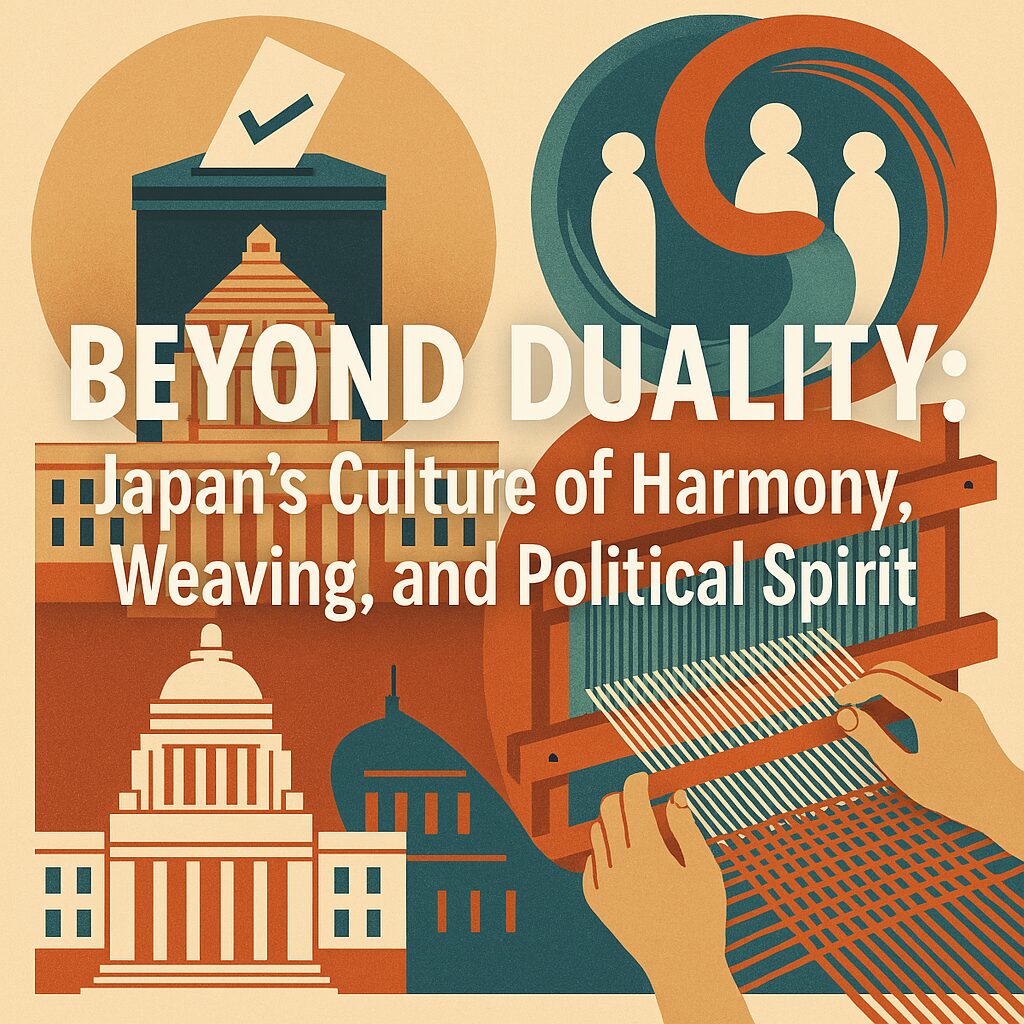🗳️ Modern Politics and Ancient Philosophy
In modern democracies, debate is often framed as opposition—left versus right, governing versus opposition parties. Systems like Japan’s bicameral legislature and America’s two-party system exemplify this. Decisions are made by distilling diverse opinions into two choices: for or against.
Some scholars suggest this duality has roots in China’s yin-yang worldview and project it onto Japanese society, even interpreting creation myths from Kojiki (Japan’s ancient chronicles) through that lens.
But this view overlooks the unique nature of Japanese civilization.
🧭 Japan’s Unique Civilizational Identity
Japan is not a satellite civilization of China. It has absorbed elements from China, India, and other cultures not as a copy—but as a conscious cultural refinement. Even British historian Arnold J. Toynbee revised his original view after visiting Japan, affirming that Japan had cultivated an independent civilization.
Instead of dualism, Japan’s worldview embraces distribution and connection, not binary “good vs. evil.”
🌀 Divinity of Connection: The Three Kami
In Kojiki, Japan’s creation begins with:
- Ame-no-Minakanushi: the god of centrality and space
- Takami-Musubi: god of higher connections
- Kami-Musubi: god of divine ties
These three deities emphasize musubi—the sacred union of heaven, earth, people, and ancestors. The Japanese universe is not a battleground of opposites, but a woven tapestry of relationships.
🧵 Cloth and Cosmic Harmony
Ancient Japanese philosophy compares existence to weaving. The warp (vertical threads) and weft (horizontal threads) form kinu (cloth), symbolizing the integration of energies. “Ki” means energy, “nu” means piercing—kinu is energy woven through.
Human progress rests on three tools:
- Reed boats (mobility)
- Obsidian blades (precision)
- Cloth (protection and vitality)
Uniquely, Japan links the origin of cloth to the god Takemikazuchi, also called Take-futsu or Toyo-futsu—a male deity and protector of warriors. The Japanese blade was not developed for violence but to measure and cut cloth precisely.
Even Amaterasu, the sun goddess, performs weaving—emphasizing the shared dignity of labor.
💫 Middle Ground over Conflict
Western dualism often leads to extremes—labeling one side “good” and the other “evil,” justifying attacks in the name of virtue. This has fueled historical tragedies like witch hunts and colonialism. We see echoes of this in modern political campaigns based on antagonism.
Japan takes a different path. From the Jōmon era onward, its worldview focused on Nakanaka—the “middle now”—a balanced moment where connections are forged. In political practice, even leadership contests are governed by respect and obligation, not mere rivalry.
Criticism between camps may appear on the surface, but deep down, Japanese politics runs on mutual relationships.
🤝 The Japanese Way: Gratitude and Weaving Communities
In Japan, society values gratitude for past kindness, respect for effort, and the quiet building of cooperative relationships. Political decisions—even in party leadership elections—are influenced more by giri (duty) and ninjō (human feeling) than personal gain.
This cultural continuity, anchored in musubi, has held for millennia.
Japan teaches that harmony is stronger than opposition, and that a society is stitched together not by combat—but by shared purpose.



コメント